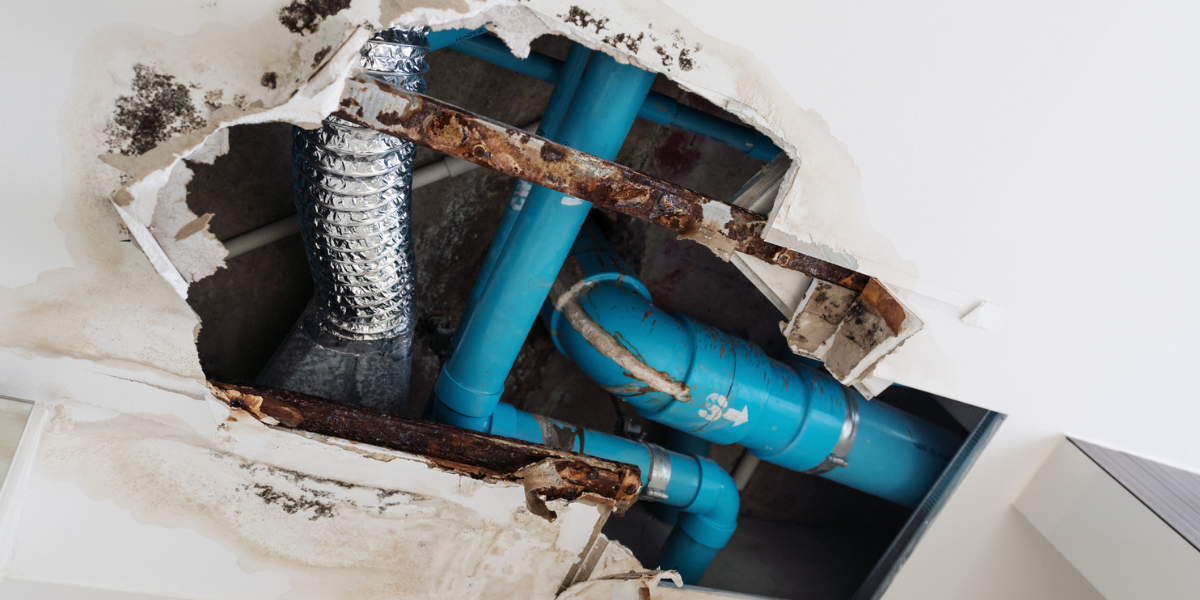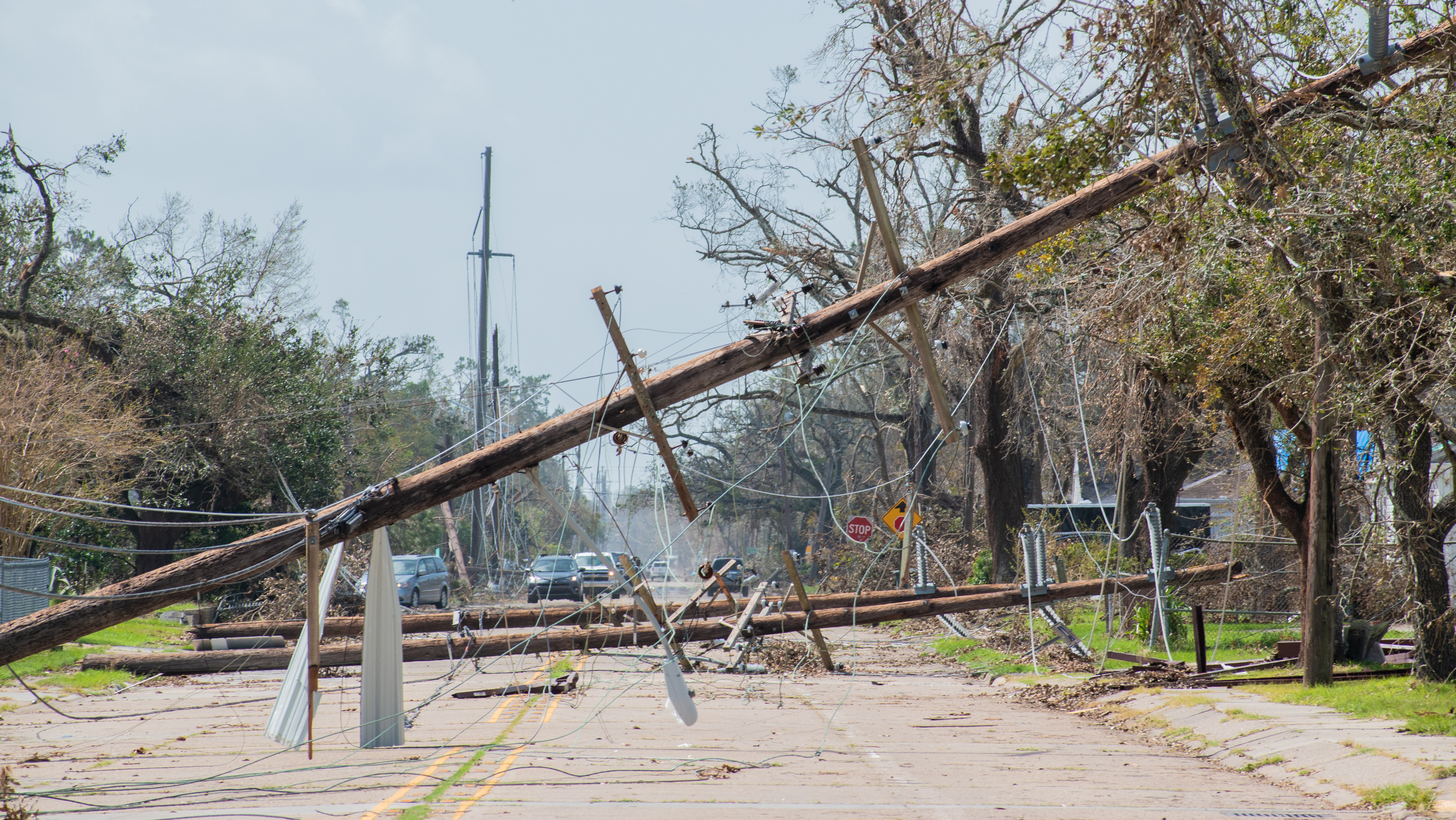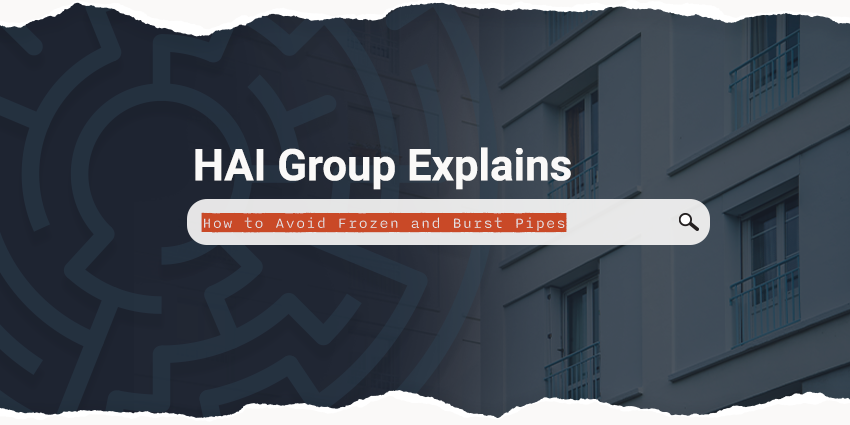Water damage might not be as dramatic as a fire, but for affordable housing organizations, it's nearly as costly—and far more common. In fact, among HAI Group policyholders, water damage was the second most common property claim as of 2024, totaling 242 claims and $17.04 million in damages.
The good news? Most water damage incidents are preventable with a proactive maintenance strategy. The right strategies can help protect your properties, your residents’ belongings, and your organization's long-term sustainability.
The risk: Water intrusion can be more than just a nuisance
It can compromise your building’s structure, trigger mold growth, and even cause personal injuries from collapsing ceilings or slippery floors. These types of issues not only increase liability—they also take time, energy, and resources away from the people and programs that matter most.
Whether the culprit is a clogged HVAC drain line, a compromised sprinkler head, or an old cast iron pipe, there’s one common thread: preventative maintenance makes all the difference.
HVAC systems and attic-mounted plumbing equipment
Drip pans
Drip pans are a simple but essential safeguard. You’ll typically find them under water heaters, A/C units, and other equipment in attic or ceiling spaces. They’re designed to catch leaks, but if they’re improperly installed or not maintained, they may do more harm than good.
Maintenance Tip:
Inspect drip pans regularly. If you spot standing water, look for leaks around pipe fittings and tighten or replace valves as needed.
Drip lines
A/C units remove humidity by converting it into water. That water travels from the drain pan through a drip line—usually discharging outside. But when that line clogs with dirt, dust, or mold, water backs up fast.
Red flags include:
- A/C unit stops working
- Standing water or full drip pan
- Musty smells
- Water stains
- Alerts from newer system technology
Maintenance tip:
Schedule regular HVAC inspections and ask your HVAC professional for help developing a preventative maintenance plan that’s tailored to your system.
Sprinkler systems
Sprinkler systems are critical for fire safety, but they’re also a top cause of unintended water damage. A single accidental activation—whether from vandalism, resident tampering, or improper use—can result in tens of thousands of dollars in damage.
Ceiling types matter
- Above finished ceilings: Water leaks in these concealed areas (chases) often go unnoticed until it’s too late.
- Exposed ceilings: Easier to monitor, but still vulnerable to water discharge.
Maintenance tip:
Stick to a strict inspection schedule—weekly, quarterly, and annually—and make sure your team checks system components during both scheduled and unscheduled visits to leased units. Maintain up-to-date system schematics and share them with staff.
On the tenant side:
Enforce strict lease terms that prohibit alterations or repairs involving sprinkler systems. Educate residents about the risks of hanging items from pipes or sprinkler heads—it’s a common mistake that can lead to major headaches.
Plumbing and Water Supply Lines
From aging cast iron to newer PVC systems, water supply lines are often “out of sight, out of mind”—until they fail.
What you’re working with:
- Copper: Durable and reliable, but susceptible to corrosion from acidic water.
- Cast Iron: Still in use in some older buildings but linked to health concerns and corrosion issues.
- PVC: A cost-effective option that’s lightweight, insulative, and sound-dampening.
Maintenance tip:
Even if you don’t see a leak, make plumbing inspections a regular part of your maintenance calendar. Check all accessible lines—not just the most obvious ones. And don’t cover water stains with paint without investigating first. What’s on the surface might be the tip of a much larger problem.
Stay on top of recalls, tackle even minor leaks quickly, and always document your inspections and repairs.
Roof systems and drainage
Roofs are your building’s first line of defense against the elements—and a major risk area for water intrusion.
Key problem areas:
- Flat roofs: These are especially prone to ponding water, which can lead to punctures or seam failures.
- Roof-mounted equipment: Things like solar panels or HVAC units can damage roof coverings when not properly installed or maintained.
- Gutters and downspouts: Essential for directing water away from the roof. When clogged or damaged, water finds the path of least resistance—often straight into your building.
Maintenance tip:
Inspect roofs at least twice a year (ideally in spring and fall), after every major storm, and before each new season. Don’t just inspect from the outside—get into the attic to check for hidden moisture or damage.
Always take photos and keep written records of what you find. Past issues often signal future problems, so reviewing your repair history is key to spotting patterns and preventing repeat failures.
The bottom line
With today’s advancements in inspection and documentation tools, housing organizations are expected to stay ahead of deteriorating conditions. “We didn’t know” is no longer a viable excuse, and claims stemming from poor maintenance can hurt the entire affordable housing industry’s insurance position.
A proactive maintenance strategy doesn’t just reduce costly claims. It builds safer communities, protects vital housing stock, and shows residents that their well-being is your top priority.
Want to take your maintenance planning further?
Download our Water Damage Prevention Risk Guide for system-specific checklists, inspection schedules, and documentation tips.
Contact our Risk Control and Consulting team for more resources and answers to your housing organization’s risk-related questions.
Interested in Working With HAI Group? Our Account Services team is ready to assist you.
This article is for general information only. HAI Group® makes no representation or warranty about the accuracy or applicability of this information for any particular use or circumstance. Your use of this information is at your own discretion and risk. HAI Group® and any author or contributor identified herein assume no responsibility for your use of this information. You should consult with your attorney or subject matter advisor before adopting any risk management strategy or policy.
HAI Group® is a marketing name used to refer to insurers, a producer, and related service providers affiliated through a common mission, management, and governance. Property-casualty insurance and related services are written or provided by Housing Authority Property Insurance, A Mutual Company; Housing Enterprise Insurance Company, Inc.; Housing Specialty Insurance Company, Inc.; Housing Investment Group, Inc.; and Housing Insurance Services (DBA Housing Insurance Agency Services in NY and MI).







